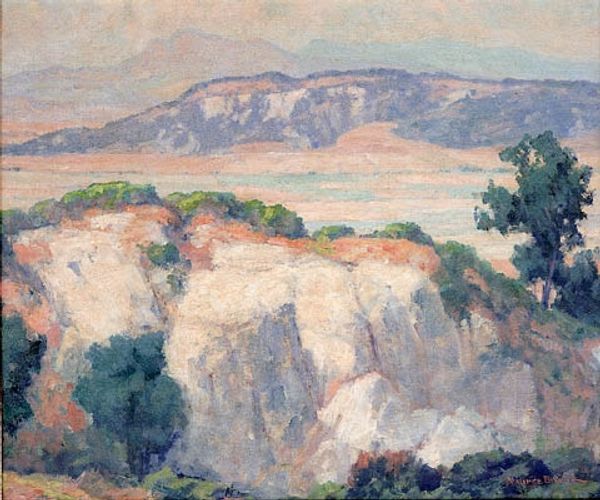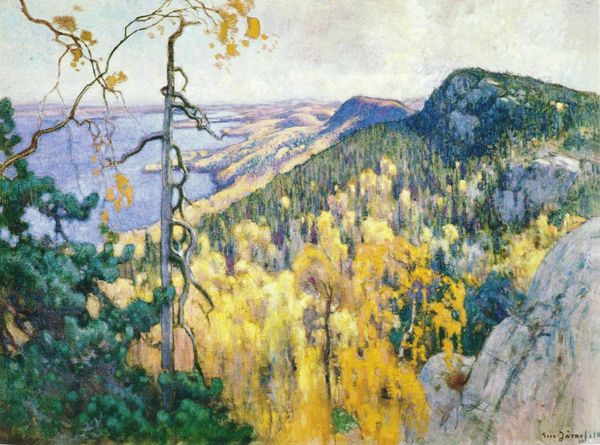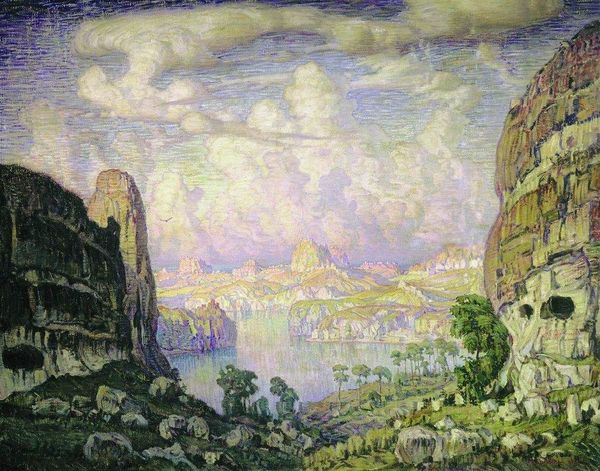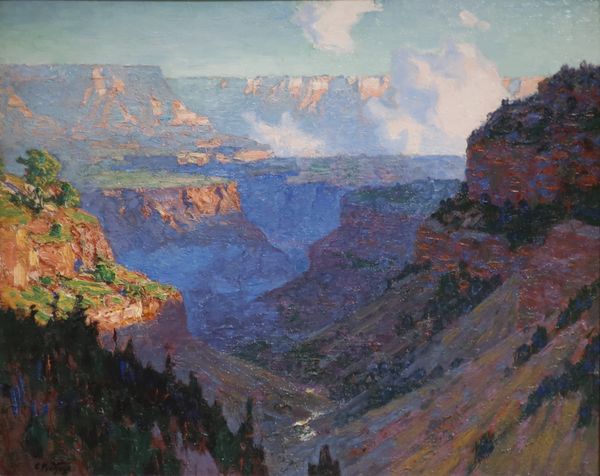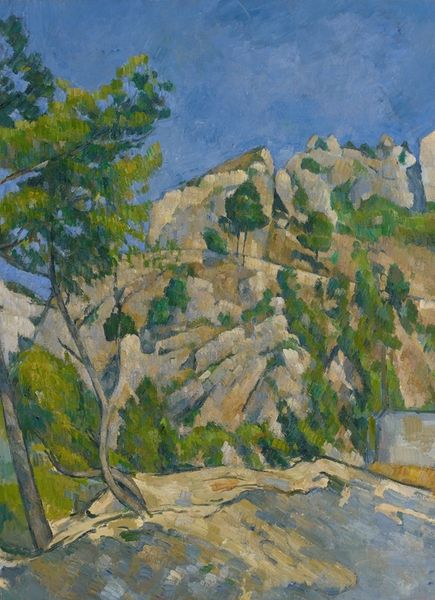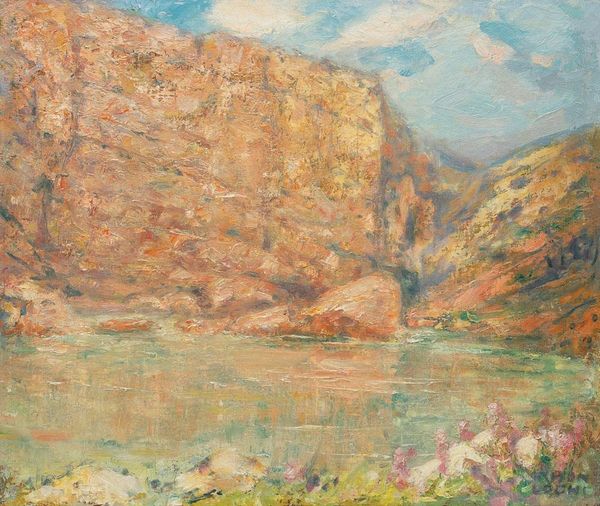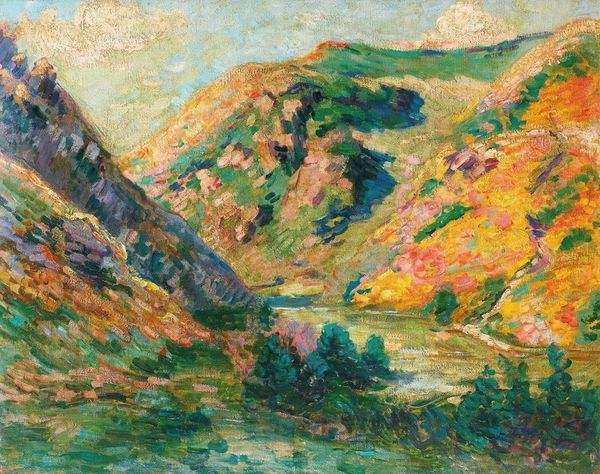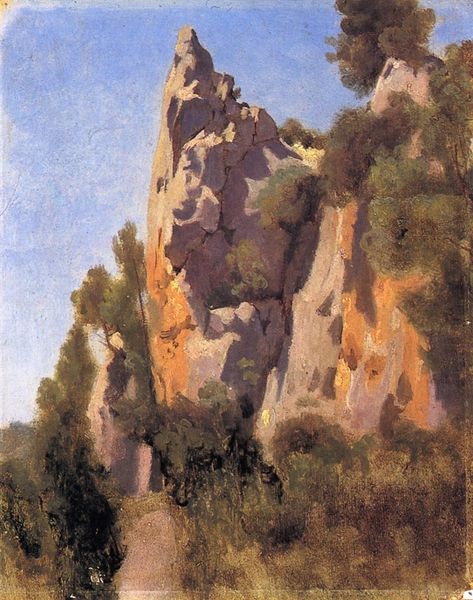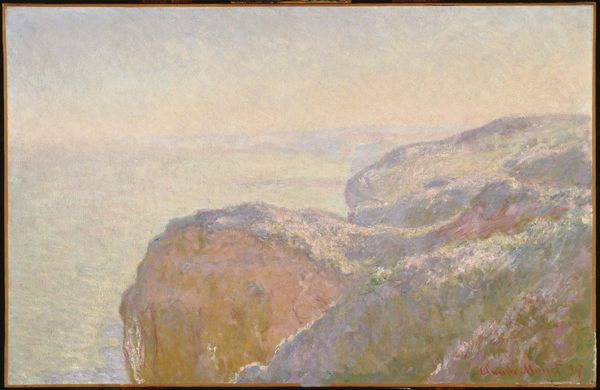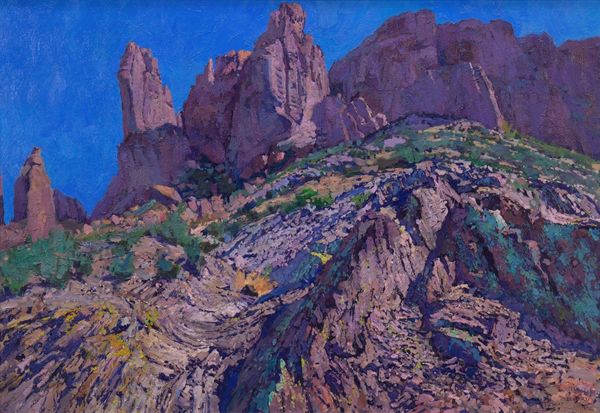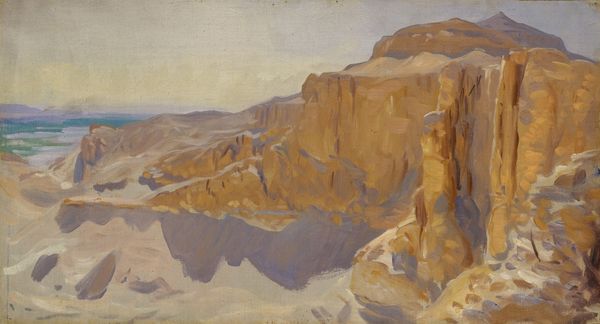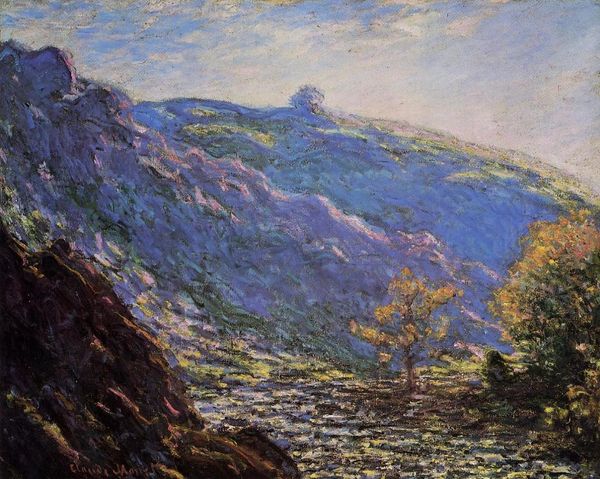
Copyright: Public domain
Curator: This is Robert Lewis Reid's "View from a Mountaintop," painted around 1920. Editor: Wow, there's a dreamlike quality to it. The pale colors and fragmented brushstrokes give it an ethereal, almost unreal feeling. Curator: Reid, deeply rooted in the Impressionist movement, had a keen ability to capture not just the visual, but also the atmospheric and emotional resonance of a landscape. You know, the context is interesting too. He was part of the Ten American Painters, a group that seceded from the Society of American Artists in protest against its increasing commercialism and lack of focus on artistic innovation. Editor: I see how that breakaway relates to what's happening here. You can really see his brushstrokes, like distinct touches building a mosaic, an active engagement with applying the paint that shows labor of making. The raw materials and act of building the painting with the landscape, the work... you feel the mountain. Curator: Precisely. Think about what landscapes, and mountaintops especially, represented during this time, around the end of the first World War. It's about looking for peace, healing, even a kind of spiritual refuge after the traumas the society had undergone. The view *from* a mountain embodies looking into a future full of uncertainty but also hope. Editor: True. And considering the social context, these serene scenes became consumer products too. You have landscapes packaged to offer some relief from industrial labor—it soothes some while it maybe complicates for others... The very materials themselves, pigments made and used in plein air painting--how were those industries situated? How were these tools themselves products of a changing landscape? Curator: A fair point, especially in the context of modernism and its own industrialization. What really intrigues me, beyond the material composition, is the contrast in styles – the almost photorealistic rendering of the foreground cliffs versus the diffused, dreamy depiction of the distant plains. Editor: It makes you think about access and who the audience for this landscape actually was. Did it ease their connection to nature or keep them disconnected by creating a false or impossible experience of nature? Curator: Absolutely, it opens up complex questions about our relationship to land, labor, and identity itself. Editor: This painting provides an opening for new considerations about art's place in the world. Curator: And reminds us that landscape painting is never just about scenery, but also a reflection of the society creating and consuming it.
Comments
No comments
Be the first to comment and join the conversation on the ultimate creative platform.
